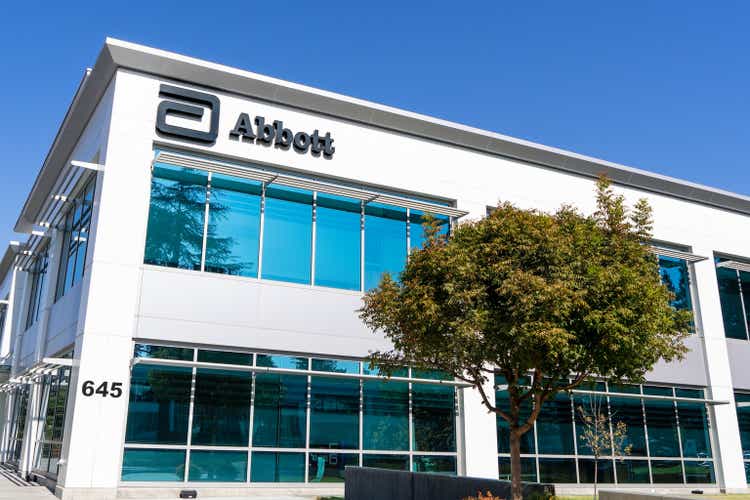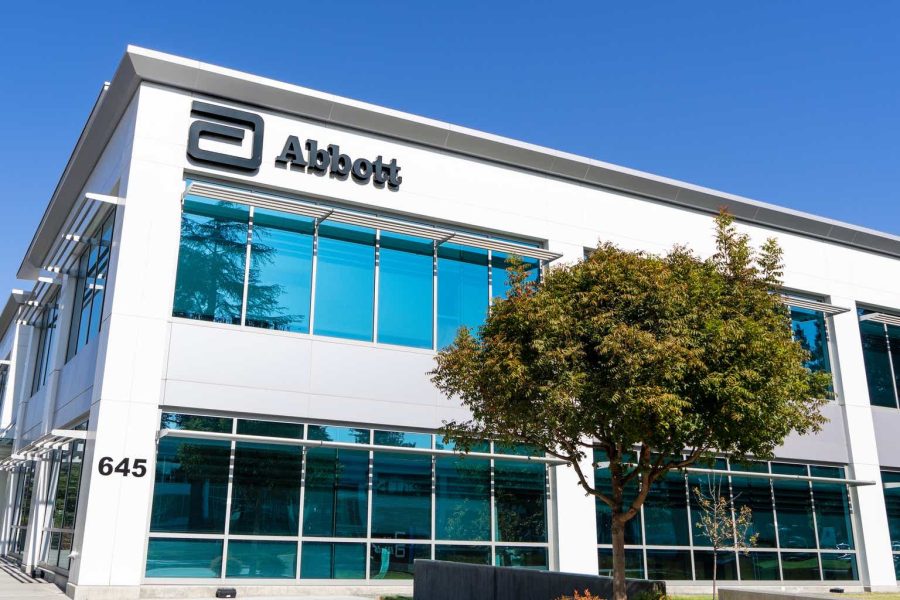Summary:
- Abbott Labs has continued to lag competitors like Boston Scientific and Stryker that are seen as more innovative and more likely to generate attractive revenue growth and margins.
- I think Abbott could deliver some upside in Q2 from its devices and diagnostics businesses, with strong momentum in diabetes but some risk in electrophysiology.
- Litigation around infant formula has raised the specter of multibillion-dollar payouts.
- Concerns about Abbott’s R&D productivity may seem unfair in the context of strong medical device growth, but past featured products have a mixed record and Abbott is late in PFA.
- I expect around 6% revenue growth and 8% FCF growth from Abbott over the longer term, and I can argue for a fair value closer to $120, but sentiment may take some time to rebound.
Sundry Photography
I’ve never really been a big fan of Abbott Labs (NYSE:ABT). Some of that has been due to timing and valuation, but I’ve also always regarded the company as more of a “fast follower” than a real innovator (and sometimes not even that fast with the following…) when it comes to the more attractive areas of medical technology. With that, the total package just never seems like quite enough to get more positive.
It’s been a while since I’ve updated my thoughts on Abbott for Seeking Alpha, and since that last article, the shares are down about 6%, lagging the broader medical device space and trailing far behind companies like Boston Scientific (BSX) and Stryker (SYK) that I would argue check more of the boxes I value when looking at large med-tech names.
My feelings on Abbott are still at least partly “meh”. I am very interested to see what the company can do with its upcoming Lingo launch, and I likewise am at least somewhat bullish about opportunities like leadless dual-chamber pacing, but I’m concerned about the risk of erosion in the electrophysiology (or EP) business and products elsewhere in the pipeline that just may not be good enough to move the needle. The shares do look somewhat undervalued, though, and it’s a name worth watching as I do believe there is a price where Abbott shares get more interesting.
Q2 Should Be Fairly Good
I’m expecting around 9% adjusted growth from Abbott in the upcoming quarter, and while that’s normally a very good result for a large med-tech, I could see peers like Boston Scientific, Edwards (EW), and Stryker doing even better and stealing some of the limelight. I also note that there is a risk that reported revenue could be a little weak, as forex headwinds are likely to be worse than the Street has modeled.
Looking at the business, I expect 11% to 12% core growth in the medical device business, and that should compare well even against those names I just mentioned. There is strong momentum in Diabetes on the ongoing ramp of the Libre 3, and likewise the Neuromodulation and Structural Heart businesses are showing healthy momentum. I do think that EP will be strong again as overall ablation procedure volumes continue to grow, but I do think some evidence of competitive pressure from Boston Scientific’s Farapulse PFA ablation success will start to show.
I think the Established Pharmaceuticals is likely to come in around 9% on strong pricing, and I think there could be some upside in Diagnostics (up around 9% adjusted) with a delay in value-based pricing in the Chinese market. Nutrition should continue to benefit from the pediatric business continuing to regain share.
I don’t expect a lot of dramatics with the margins, as the company has been pretty consistent with its recent performance.
How Big Of A Threat Are The Pediatric Nutrition Lawsuits?
One of the biggest recent issues for Abbott has been the accusation that the company’s infant formulas for pre-term infants are responsible for cases of necrotizing enterocolitis, particularly after a jury awarded $60M in mid-March to the mother of a baby who died of NEC after taking Reckitt Benckiser’s Enfamil.
There have been roughly 1,000 cases filed against Abbott making similar allegations, and quick math shows an eyepopping $60B potential liability (that, I believe, is an incredibly extreme worst-case scenario), and Abbott has lost about $20B in value since that jury verdict, or roughly the value of the entire Nutrition business.
Thus far there is no scientific evidence linking Abbott’s formulas to NEC, other than it is known that cow’s milk does increase the risk of NEC, and it’s worth noting that these formulas are provided by physicians and are not OTC products. None of this necessarily shields Abbott from liability, but I do think the $20B decline (assuming that has been the only driver) is an extreme assessment of Abbott’s likely liability.
Can Abbott Change The Tone Around It’s R&D And Innovation Record?
While management has noted that about 25% of incremental revenue growth is now coming from new products, I feel as though there is a lingering opinion around Abbott that the company is not particularly innovative and that they often target the wrong markets and/or are late to target more compelling opportunities.
Looking back at 2021 and what were supposed to be some of the big drivers, it’s not an entirely unfair point. While products like Amulet, MitraClip, and CardioMEMS are still early in their commercial lives, they’re collectively contributing around $290M/quarter now versus $220M in 2021. Again, this is not entirely fair to Abbott, as I believe there is still significant future growth potential and it takes time to build new therapeutic markets, but if those were some of the big pipeline items, it’s easy to understand some level of disappointment (although Libre 3 has very much come through). Likewise, Abbott’s diagnostics business looks fairly “ho hum”, with a lagging presence in areas like point-of-care (relative to bioMerieux, Danaher (DHR), and Roche (OTCQX:RHHBY)) and molecular diagnostics.
I also think it’s fair to criticize Abbott for being late to the party with pulsed field ablation catheters for atrial fibrillation. Boston Scientific has seen a very strong initial ramp and it looks as though PFA will be the dominant ablation type within five years (taking share from RF and cryo). Abbott is going to be fourth to the market, behind BSX, Johnson & Johnson (JNJ), and Medtronic (MDT), and it remains to be seen whether they can come up with a better mousetrap (like combo RF/PFA catheters) that can help drive some share regrowth at a later date.
In the short term, Abbott can withstand some of this competitive pressure. The catheters themselves are about a quarter of the EP business, and there are still opportunities to benefit from the sale of other consumables and from mapping. On the other hand, the economics of PFA procedures discourages mapping and it already looks as though PFA offerings can drive increased pull-through of other consumables, so I do see growing risk to this key franchise (particularly on the mapping side).
With this pressure, it’s important for Abbott to deliver on their pipeline. Leadless dual-chamber pacing remains an attractive opportunity that is likely less than 15% penetrated in developed markets and could be worth multiple billions of dollars over time. I’m also bullish on Lingo, a new biosensor and app that is intended for people who do not have diabetes but want to monitor their blood glucose as part of overall wellness management. Management believes Lingo could be a billion-dollar business in 2028 and that may be conservative.
Other products fall into my “we’ll see” bucket, including the Espirit below-the-knee dissolving stent, a glucose/ketone sensor, a new version of Amulet, and an intravascular lithotripsy (or IVL) catheter. This last product, acquired with the 2023 acquisition of CSII, has been slow to develop, and while the IVL market is large and growing, catching up with JNJ’s Shockwave will require very good data and/or a strong sales effort.
The Outlook
Unfortunately it’s just not practical to cover all the potential drivers and contributors to Abbott’s performance. To that end, I am still bullish on structural heart products like Amulet and MitraClip, although less bullish on the new TriClip, but it will take time (and additional clinical data) to develop the market and that could be a discussion for a future day. I do also think that Boston Scientific is a formidable competitor (likewise with Edwards for TriClip).
I do think that Abbott could outperform in this upcoming quarter, and my expectations for the next three years are a little above Street averages. I’m expecting about 7% three-year growth (from 2024 onward, to neutralize any COVID-19 noise) and long-term revenue growth of around 6%. While I do have my issues and concerns with Abbott, the company still has a strong presence across cardiology and diabetes that should continue to generate good growth.
On the margin side, I expect around a quarter-point of EBITDA margin improvement this year (to 25.75%) and about 250bp of further improvement over the next five years. That, in turn, should help drive free cash flow margins into the low-20%’s, and I’m expecting double-digit long-term FCF growth, albeit from a low starting point (adjusted/normalized growth is closer to 8%).
Discounted cash flow suggests Abbott is more or less fairly valued today, while growth/margin-based EV/revenue points to a fair value closer to $120. That’s more undervaluation than I’ve seen recently with names like BSX, and I do think it reflects some of the sentiment headwinds around Abbott.
The Bottom Line
I don’t think lawsuit risk should just be ignored here, and likewise I don’t want to give a pass to Abbott on what I regard as missed opportunities in product and market development. Still, mid-to-high single-digit revenue growth isn’t bad, particularly with healthy margins, and I do think this is a name worth at least a spot on a watch list.
Analyst’s Disclosure: I/we have a beneficial long position in the shares of RHHBY either through stock ownership, options, or other derivatives. I wrote this article myself, and it expresses my own opinions. I am not receiving compensation for it (other than from Seeking Alpha). I have no business relationship with any company whose stock is mentioned in this article.
Seeking Alpha’s Disclosure: Past performance is no guarantee of future results. No recommendation or advice is being given as to whether any investment is suitable for a particular investor. Any views or opinions expressed above may not reflect those of Seeking Alpha as a whole. Seeking Alpha is not a licensed securities dealer, broker or US investment adviser or investment bank. Our analysts are third party authors that include both professional investors and individual investors who may not be licensed or certified by any institute or regulatory body.
